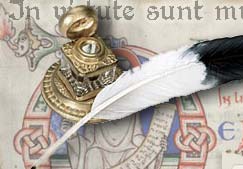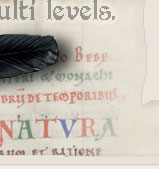Hi,
Lately it has been suggested (by me) and proposed (by Don Hoffmann) that Voynichese is neither prose nor poetry, but a technical notation composed of little or nothing but acronyms and numbers.
Don's model is pharmaceutical recipes; mine was 'recipes' in various types of textile production, but the same principle applies for scientific notations - e.g. in geography, surveying or maths.
Here's an example - non-std knit notation though.

Since it's not prose interrupted by Tironian notation, I hesitate to call it an abbreviated text, but know no other term.
I realise that texts of that kind would probably defy translation. But I'd like to know how testing them as Voynichese has been tested (redundancy, entropy, n-grams) might change our view of the Voynichese statistics.
I suppose expectations about e.g. proportion of numerical to alphabetic signs might alter, and perhaps expected frequency of consonants against vowels?
If I'm to understand any responses, it's probably a good idea to let you know that I learned the definition of "n-grams" a couple of hours ago.

Diane







